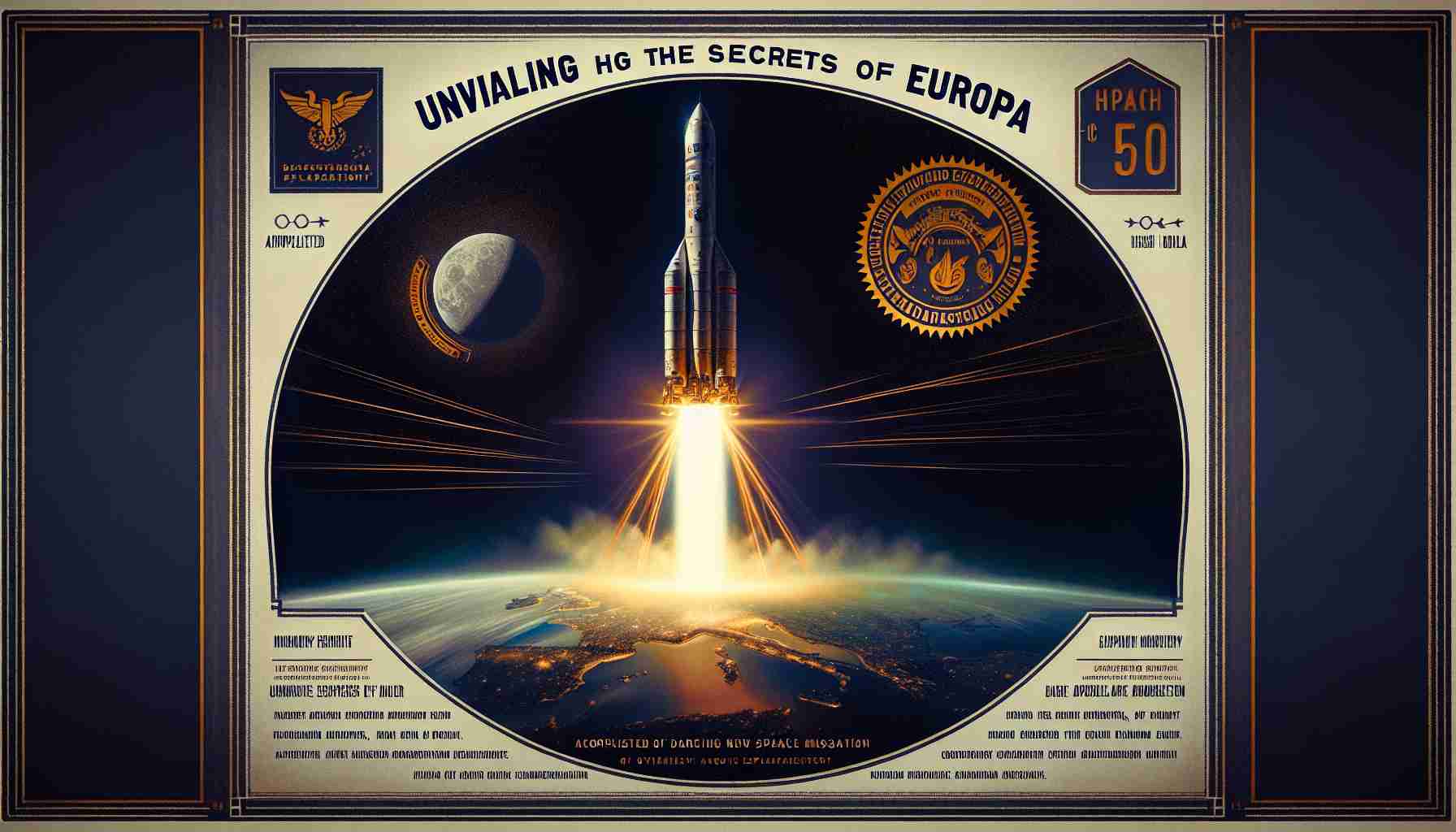- The Europa Clipper mission was launched on October 14, 2024, aboard a Falcon Heavy rocket.
- It aims to reach Europa, a moon of Jupiter, by April 2030, traveling approximately 2.9 billion kilometers.
- The mission will conduct 49 close flybys to search for biosignatures beneath Europa’s icy surface.
- Equipped with nine advanced scientific instruments, it represents a major step in astrobiological research.
- The probe will collaborate with the ESA’s JUICE mission by July 2031, expanding its exploration to other moons.
- Successful testing of the probe’s stellar reference units has been completed, aiding in navigation.
- If viable conditions for extraterrestrial life are found, a potential lander mission could follow.
On October 14, 2024, NASA launched the Europa Clipper mission, a thrilling journey aboard a Falcon Heavy rocket from Florida’s Kennedy Space Center. Over the next several years, this groundbreaking probe will voyage approximately 2.9 billion kilometers (1.8 billion miles) to Jupiter’s enigmatic moon, Europa, with an anticipated arrival in April 2030.
Once it reaches its destination, the Europa Clipper will embark on an extraordinary quest, conducting 49 close flybys of this frosty “Ocean World”. Equipped with nine state-of-the-art scientific instruments, it will search for biosignatures—chemical signs that could hint at potential life lurking beneath Europa’s icy surface. The excitement doesn’t end there; by July 2031, it will engage in a cosmic duet with ESA’s JUICE, exploring other intriguing moons like Ganymede and Callisto.
In a recent triumph, the mission team successfully tested the probe’s stellar reference units, capturing its first cosmic images. These stunning photos reveal distant stars, helping the spacecraft orient itself in the vast expanse of space. Understanding orientation is crucial for directing its antennas back to Earth, allowing scientists to collect essential mission data.
As the Europa Clipper races toward its destination at remarkable speeds, it carries the weight of a significant goal: to uncover whether hidden lakes or oceanic conditions exist beneath Europa’s surface, providing tantalizing possibilities for extraterrestrial life. If evidence emerges, NASA plans an even bolder mission—a lander that could directly explore Europa’s mysterious terrain.
Prepare for an adventure that could redefine our understanding of life beyond Earth!
Unlocking the Secrets of Europa: NASA’s Groundbreaking Clipper Mission!
Overview of the Europa Clipper Mission
On October 14, 2024, NASA launched the Europa Clipper mission aboard a Falcon Heavy rocket from Florida’s Kennedy Space Center. Over the next several years, this groundbreaking probe will embark on a journey of approximately 2.9 billion kilometers (1.8 billion miles) to Jupiter’s enigmatic moon, Europa, with an anticipated arrival in April 2030. Equipped with nine advanced scientific instruments, the probe aims to identify biosignatures—chemical indicators that may suggest the presence of life beneath Europa’s icy crust.
New Insights and Specifications
Innovative Instrumentation: The nine scientific instruments aboard the Europa Clipper include an ice-penetrating radar, a mass spectrometer, and a thermal mapper, enabling the probe to analyze surface and subsurface conditions.
Proposed Discoveries: Preliminary studies suggest that Europa may harbor liquid water beneath its ice shell, which could potentially support life. The mission’s goal is not only to detect signs of life but to understand the moon’s geophysical and geological activity.
Collaboration with ESA: The mission will strategically collaborate with the European Space Agency’s JUICE spacecraft, which is set to explore Ganymede and Callisto. This collaboration is expected to provide comprehensive knowledge about the Jovian system.
Related Information
– Market Forecasts: Information from the mission could lead to an influx of investments in astrobiology and planetary science research aimed at understanding extraterrestrial environments.
– Sustainability and Planetary Protection: NASA emphasizes the importance of planetary protection and sustainable exploration. Plans for the lander mission would include strict protocols to avoid contamination of potential life forms.
Significant Questions About the Mission
1. What is the primary goal of the Europa Clipper mission?
– The primary goal is to assess Europa’s potential habitability by characterizing its ice shell and subsurface ocean, and searching for biosignatures that indicate possible life.
2. How will the Europa Clipper’s instruments gather data?
– The instruments will collect data via close flybys, performing tasks such as mapping the surface, analyzing the ice composition, and measuring the moon’s surface temperature to explore the composition of the underlying ocean.
3. What are the implications of this mission for the future of space exploration?
– If the Europa Clipper discovers signs of life or favorable conditions for it, it may pave the way for future missions, including a lander that could directly sample the surface, expanding humanity’s understanding of life’s potential beyond Earth.
Related Resources
For further insights into NASA and its missions, visit: NASA
The Europa Clipper mission is not just a scientific endeavor; it’s a leap into an unexplored frontier that could challenge our understanding of life’s possibilities in the universe. Keep an eye on this exciting journey as it unfolds!













